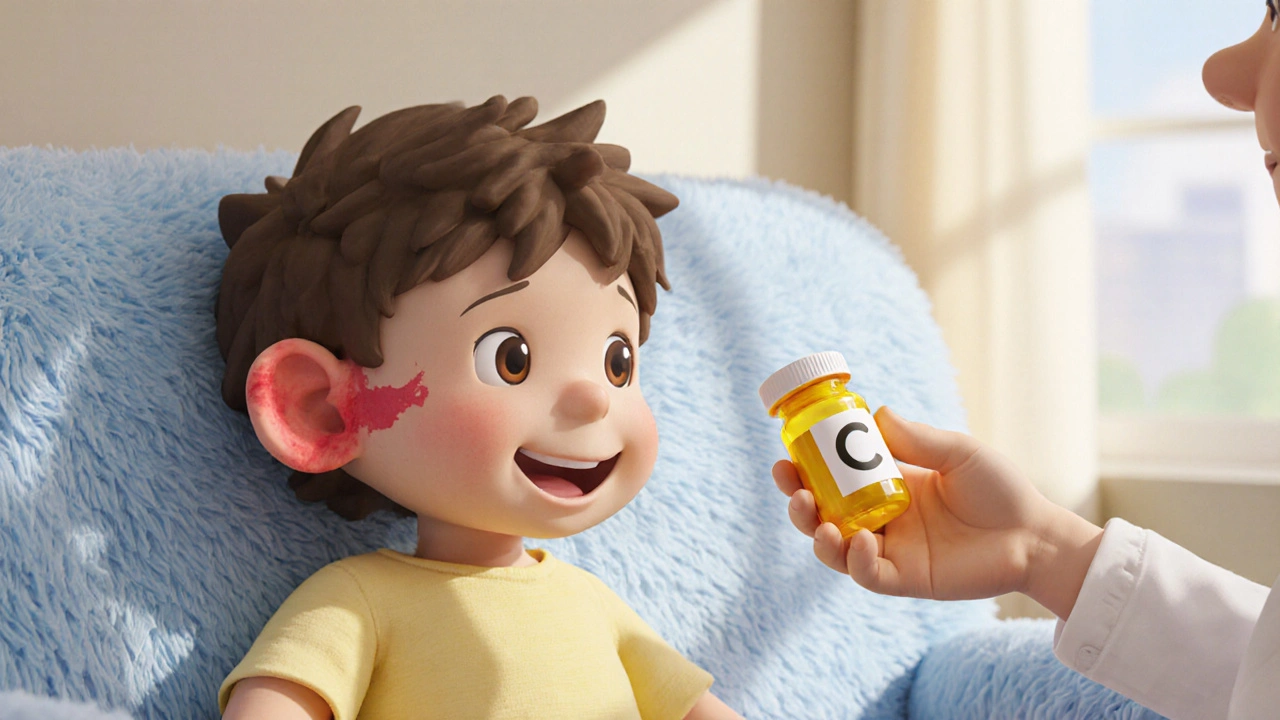
Cefaclor vs Other Antibiotics: Dosage, Side Effects, and Effectiveness
Explore how Cefaclor (Cefaclor Monohydrate) stacks up against common antibiotics. Get dosage, side‑effect, cost, and usage guidance to choose the right option for infections.
When talking about Cefaclor dosage, the amount of the antibiotic cefaclor you should take, based on age, weight, and kidney function. Also called Ceclor, it helps doctors treat ear, skin, and throat infections. Cefaclor dosage is the key phrase you’ll see across prescribing sheets and pharmacy labels.
Another name you’ll run into is Ceclor CD, the brand‑name version of cefaclor that comes in tablets and oral suspension. It’s essentially the same drug, just marketed under a familiar label. Knowing that Ceclor CD and generic cefaclor share the same dosing rules makes it easier to follow any prescription you get.
Understanding antibiotic dosing, the process of calculating the right amount of a medication to kill bacteria without causing toxicity is crucial. Antibiotic dosing requires you to consider the infection type, the pathogen, and patient characteristics. In practice, antibiotic dosing determines how quickly a fever drops and how soon you can get back to normal activities.
When children need treatment, pediatric dosing, dosage calculations that factor in a child’s weight and age becomes the focus. Kids aren’t just small adults; their organs process drugs differently, especially the kidneys. That’s why pediatric dosing often uses milligrams per kilogram rather than a flat tablet count.
Kidney health also shapes the plan. kidney function dosing, adjustments made when a patient’s kidneys can’t clear the drug efficiently ensures you avoid buildup and side effects. If the doctor notes reduced creatinine clearance, the dose may be cut or the interval stretched.
“Cefaclor dosage encompasses adult and pediatric dosing” is the first semantic triple you’ll see. The second is “Kidney function influences cefaclor dosage”, highlighting that renal clearance is a big factor. A third triple is “Ceclor CD provides the same therapeutic effect as generic cefaclor”, reassuring you that brand doesn’t change the dose.
For a typical adult with a mild sinus infection, the usual prescription is 250 mg every 6 hours, adding up to 1 g per day. That regime works because the drug’s half‑life in healthy adults is around 1 hour, so frequent dosing keeps blood levels steady. If you miss a dose, take it as soon as you remember unless it’s almost time for the next one.
Kids weighing 20 kg often get 15 mg/kg every 8 hours, which translates to a 300 mg dose three times daily. The pediatric table is built on weight‑based math, so if your child gains weight, the doctor might recalc the dose at the next check‑up. Always double‑check the suspension strength – many pharmacies mix 125 mg/5 ml or 250 mg/5 ml, and using the wrong concentration can throw off the whole calculation.
If you have chronic kidney disease, the usual adult dose drops to 250 mg every 12 hours, or even less, depending on the glomerular filtration rate. The goal is to keep the drug effective while preventing accumulation that could lead to nausea, diarrhea, or rare allergic reactions. Doctors often run a quick blood test before prescribing to decide which schedule fits.
Side effects are usually mild – upset stomach, rash, or a temporary change in taste. Severe reactions like Stevens‑Johnson syndrome are rare, but they’re a reminder that dosing isn’t just about numbers; it’s also about monitoring how your body reacts.
When you finish a course, don’t stop early just because you feel better. Completing the full regimen prevents the bacteria from surviving at sub‑therapeutic levels, which fuels antibiotic resistance – a public‑health issue that starts with each prescription.
In practice, the pharmacy label will list the total daily dose, the interval, and the length of therapy – often 7‑10 days. Keep the label handy, set reminders on your phone, and use a dosing cup for liquids. If you’re unsure about the amount, call your pharmacist – they can walk you through the math.
So far we’ve covered what cefaclor dosage looks like for adults, children, and people with kidney concerns. We’ve also linked the brand name Ceclor CD, the broader concept of antibiotic dosing, and the importance of adjusting for pediatric and renal factors. Below you’ll find a curated list of articles that dive deeper into each of these areas, giving you dose charts, safety tips, and real‑world examples to help you use Cefaclor confidently.

Explore how Cefaclor (Cefaclor Monohydrate) stacks up against common antibiotics. Get dosage, side‑effect, cost, and usage guidance to choose the right option for infections.